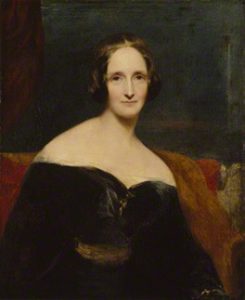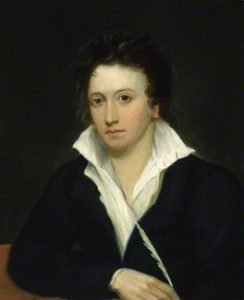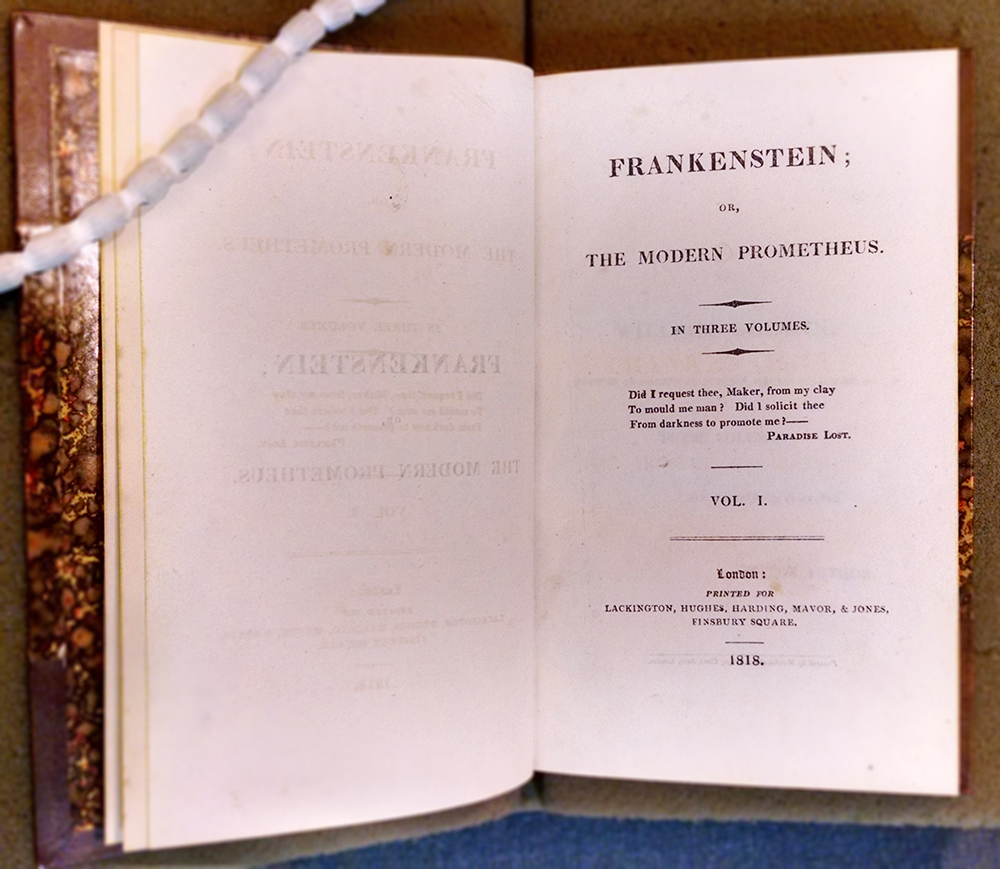What’s a good love story without a little bit of drama? Sure, there’s something to be said of happy couples riding off into the sunset, hand in hand, but what people really want are stories full of pain, struggle, heartbreak, infidelity, poverty, loss, and just enough love left over to keep things interesting. While most of us turn to the latest Hollywood soap opera to get our fix of these addicting dramas, no fiction can compare to the spectacular story of Frankenstein author Mary Wollstonecraft Godwin and poet Percy Shelley. Today, we celebrate the anniversary of this literary power couple eloping to France on July 28, 1814 by revisiting their tragically beautiful (or tragically tragic, depending on how you look at it) love story. Strap in and grab your popcorn, because theirs is a love affair with enough twists and turns to keep you on the edge of your seat long past the final page.

She was a smart, rebellious teenager with a past full of demons, the perfect leading lady. Extremely affected by the death of her birth mother Mary Wollstonecraft, the future Mrs. Shelley was known to butt heads with her new stepmom, giving the story a little bit of a Cinderella undertone for anyone who’s counting references. These conflicts got so bad, in fact, that Mary was sent away to live with family friends until things could cool down on the home front. When she returned home, in May of 1814, that was when everything changed.

It was when she met him, or technically re-met. Years before, Mary Wollstonecraft Godwin had been introduced to Percy Shelley, who was known to frequently visit as a supporter and admirer of her father. But when they saw each other again upon Mary’s return, well, that was that. Percy Shelley was 22 at the time. He was a poet who had been kicked out of Oxford University for circulating radical pamphlets. You know, typical bad boy. He came from a wealthy family, but his parents didn’t approve of his radical ways. He was perfect for 16-year-old Mary, although his wife, Harriet, may not have felt the same. Nonetheless, Mary and Percy couldn’t stay away from each other and, after a few months of romantic strolls to her mother’s grave, they declared their love for each other right in the cemetery. This declaration provided a perfect ending to the first chapter of our heroes’ romance, as well as a setup so dramatic, intriguing, cinematic, and generally weird, that Nicolas Sparks wouldn’t even know what to do with it. Your move, Hollywood.
But then Mary and Percy, never ones to be outdone by their own dramatic intentions, decided to take their love even further by running off to France, and then all around continental Europe with Mary’s stepsister Claire Clairmont in tow. This wouldn’t be the last, or the most important trip that this literary dream team took to Europe though. During the summer of 1816, our lovers took a vacation to Geneva with Claire, John Polidori, and poet Lord Byron. If you think that this scene was all drinks by the beach and cool summer flings, though, you are sadly mistaken. Thanks to a volcanic eruption on a small Indonesian island–seriously–the weather in Europe this summer was, in a few words, cold, rainy, and sad. Instead of sipping sangria and catching some rays, Mary, Percy and the gang spent most of their time indoors. It will come as a surprise to no one that this indoor time was spent in the most dramatic way possible: telling ghost stories. Eventually Lord Byron decided to make things even more interesting by proposing a contest for each member of the party to write their own spooky tale. As topics of science, society and morality floated around on the writers’ minds, they set to work. With the wind whipping, rain pouring, and candlelight burning, Frankenstein was born.

Don’t worry though, this isn’t the happy ending you’ve been dreading. Still rocked from the premature death of their first child, gossip about their affair, and economic hardship, Mary and Percy were hardly thriving. And then, in December of 1816, Percy’s wife committed suicide while pregnant with their second child. Two weeks later, Mary and Percy were officially married. Years down the road, Percy drowned on a sailboat trip, leaving Mary with their only surviving child, Percy. And just like that, the love story was over. That’s it folks, roll credits.
To learn more about the gripping tale of these tragic lovers, be sure to check out the Rosenbach’s upcoming exhibition Frankenstein & Dracula, featuring the literary works that Mary and Percy drafted during that fateful summer in Geneva, as well as handwritten pages from Mary Shelley’s Frankenstein manuscript. Who knows–these items, and the stories behind them, might provide just the inspiration you need to start that romance novel you’ve always wanted to write. Or maybe not.
Emma Seely is an advancement intern for the Rosenbach. She is an English and psychology double major at Saint Joseph’s University. To follow Emma and her other literary exploits, check out her blog, Poems of Philadelphia.
